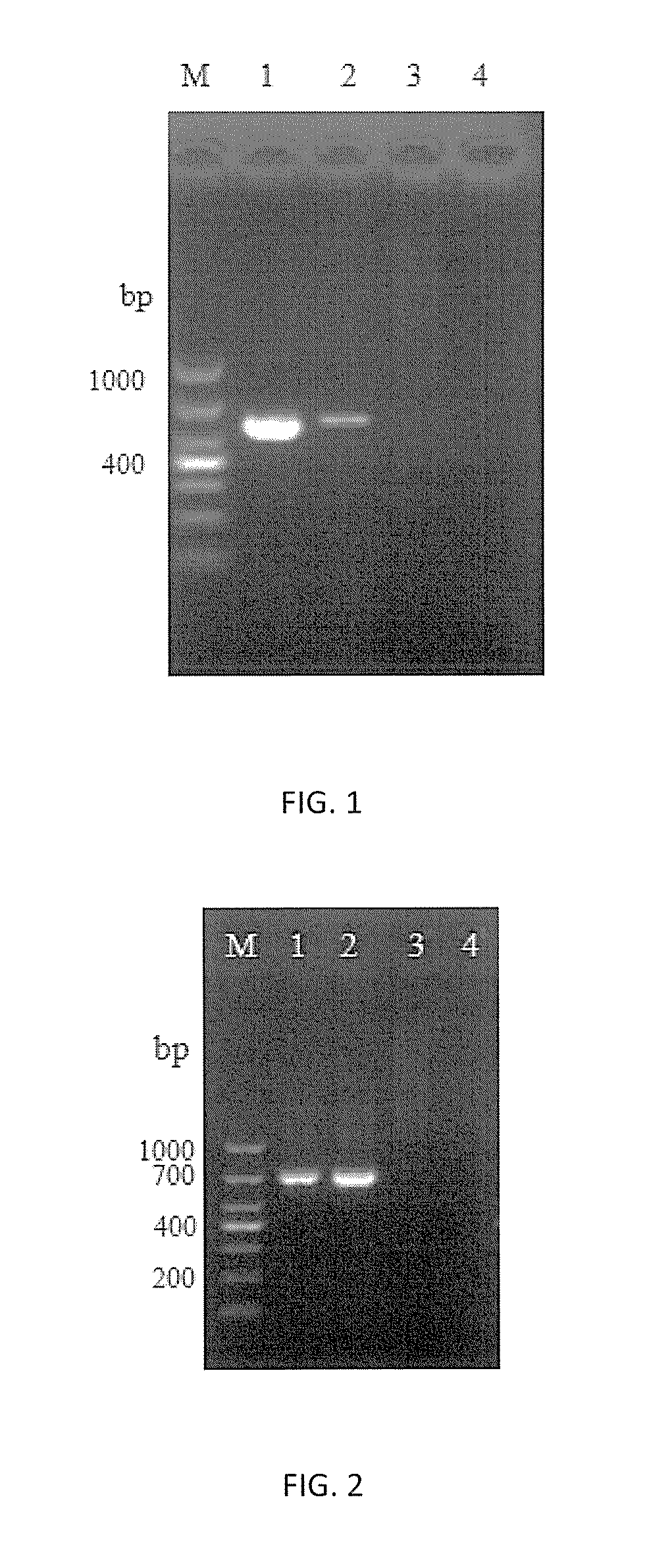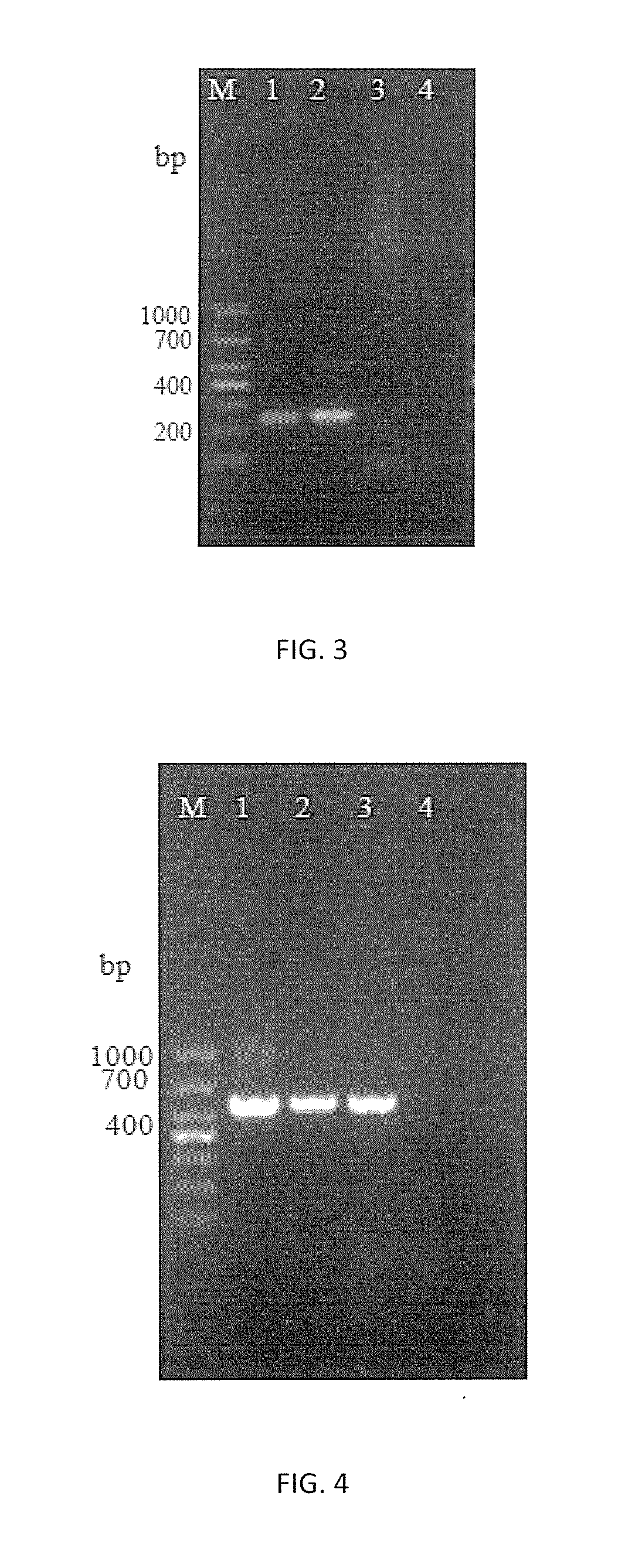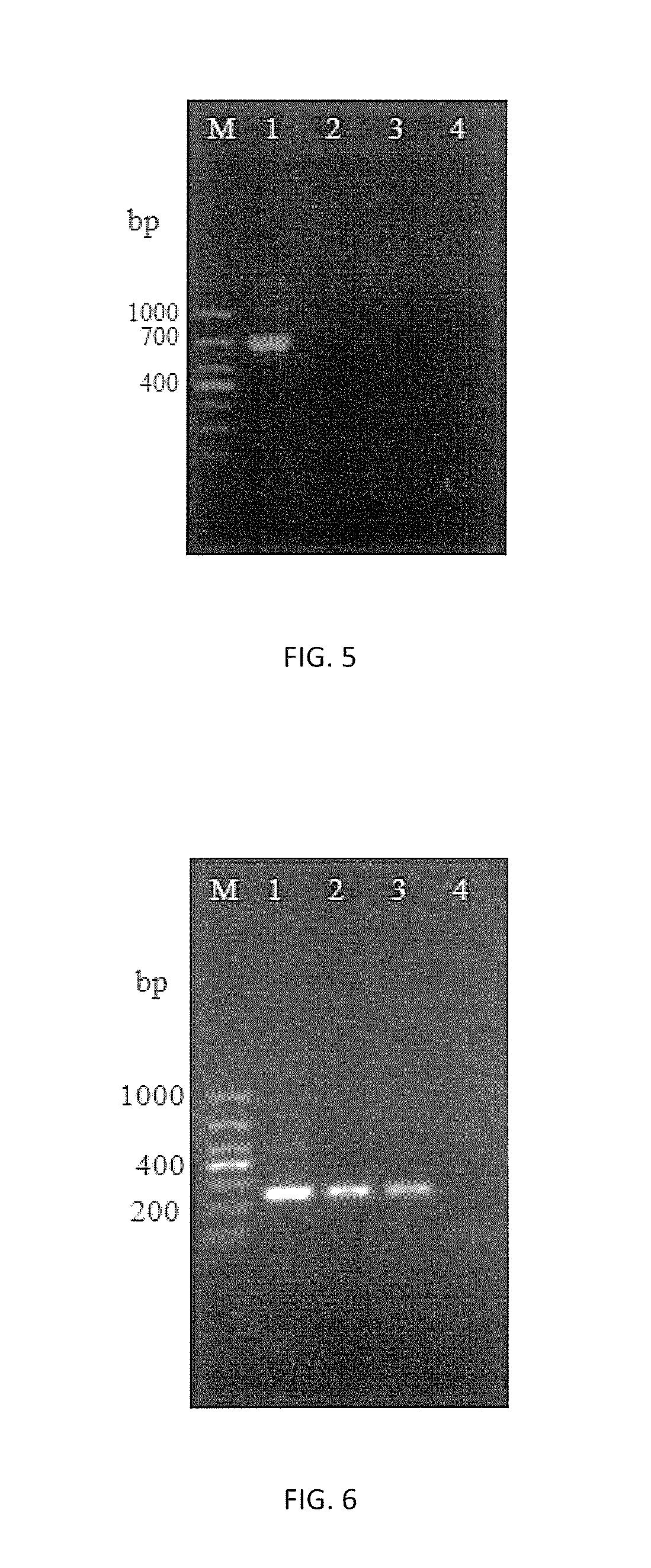HMG1 Gene and Uses Thereof in Microsporidium Molecular Detection
- Summary
- Abstract
- Description
- Claims
- Application Information
AI Technical Summary
Benefits of technology
Problems solved by technology
Method used
Image
Examples
embodiment 1
Nosema Bombycis HMG1 Gene
[0048]1. According to the gene homologous clone method in gene cloning technology of molecular biology, the full-length sequences of cDNA and DNA in Nosema bombycis HMG1 gene were obtained by cloning.
[0049]2. The specific method of obtaining the full-length sequence of cDNA is described herein below:
[0050](1), Primers HMG1F / HMG1R were designed via Primer premier 5.0 software in combination with comprehensive analysis. The sequences thereof are shown in SEQ ID NO.3 and SEQ ID NO.4.
Upstream primer HMG1F (SEQ ID NO. 3):5′ ATGACTGCTCAAAAAGACGATAC 3′Downstream primer HMG1R (SEQ ID NO. 4):5′ TTATTCATCACTATCTCCTACTTCT 3′
[0051](2) Using purified Nosema bombycis (N.b) spores DNA as template, PCR amplification was conducted with the set of primer HMG1F / HMG1R.
[0052](3) PCR products were connected to pMD19T after purification, followed by the conversion into E. coli DH-5α for culture.
[0053](4) After the recombinant plasmid was extracted and sequenced, the full-length se...
embodiment 2
Design of Detection Primers and Establishment of PCR Amplification Method
[0057]1. Design of Primers
[0058]Based on the acquisition of Nosema bombycis HMG1 gene, several pairs of primers were designed via Primer premier 5.0 software. After abundant detections of drug resistance, specificity and sensitivity, 3 pairs of primer sets with typical primers were chosen eventually and the sequences of each pair of primer are shown in below:
[0059](1) First Pair:
Upstream primer HMG1F (SEQ ID NO. 3):5′ ATGACTGCTCAAAAAGACGATAC 3′Downstream primer HMG1R (SEQ ID NO. 4):5′ TTATTCATCACTATCTCCTACTTCT 3′
[0060](2) Second Pair:
Upstream primer HMG1-sF (SEQ ID NO. 5):TTCCGAAATAATCTTCTTTTAATTGDownstream primer HMG1-sR (SEQ ID NO. 6):TTGTGCACCGAATCGTAAATAG
[0061](3) Third Pair:
Upstream primer HMG1-xF (SEQ ID NO. 7):TCCCTAGGAACTTTTAAAGAGAAGDownstream primer HMG1-xR (SEQ ID NO. 8):TCCTTTTATTCATCACTATCTCCT
[0062]2. Establishment of PCR Amplification Method
[0063](1) Extraction of Total DNA From Silkworms or Silkwo...
embodiment 3
Specificity Detection of Primers
[0077]1. Using DNA of Nosema bombycis (N.b), Nosema antheraeae (N.a), Nosema furnacalis (N.f) as templates respectively, primers HMG1F / HMG1R, HMG1-sF / HMG1-sR and HMG1-xF / HMG1-xR were proceeded with PCR amplification by the method described in Embodiment 2, followed by the agarose gel electrophoresis to detect the results.
[0078]2. The amplification results of 3 pairs of primers are shown in FIGS. 4˜6 respectively. It shows that primers HMG1-sF / HMG1-sR can detect Nosema bombycis specifically, while both primers HMG1F / HMG1R and primers HMG1-xF / HMG1-xR can detect all microsporidiums with great universal detectability but without specificity to Nosema bombycis.
PUM
| Property | Measurement | Unit |
|---|---|---|
| Temperature | aaaaa | aaaaa |
| Temperature | aaaaa | aaaaa |
| Temperature | aaaaa | aaaaa |
Abstract
Description
Claims
Application Information
 Login to View More
Login to View More - R&D
- Intellectual Property
- Life Sciences
- Materials
- Tech Scout
- Unparalleled Data Quality
- Higher Quality Content
- 60% Fewer Hallucinations
Browse by: Latest US Patents, China's latest patents, Technical Efficacy Thesaurus, Application Domain, Technology Topic, Popular Technical Reports.
© 2025 PatSnap. All rights reserved.Legal|Privacy policy|Modern Slavery Act Transparency Statement|Sitemap|About US| Contact US: help@patsnap.com



